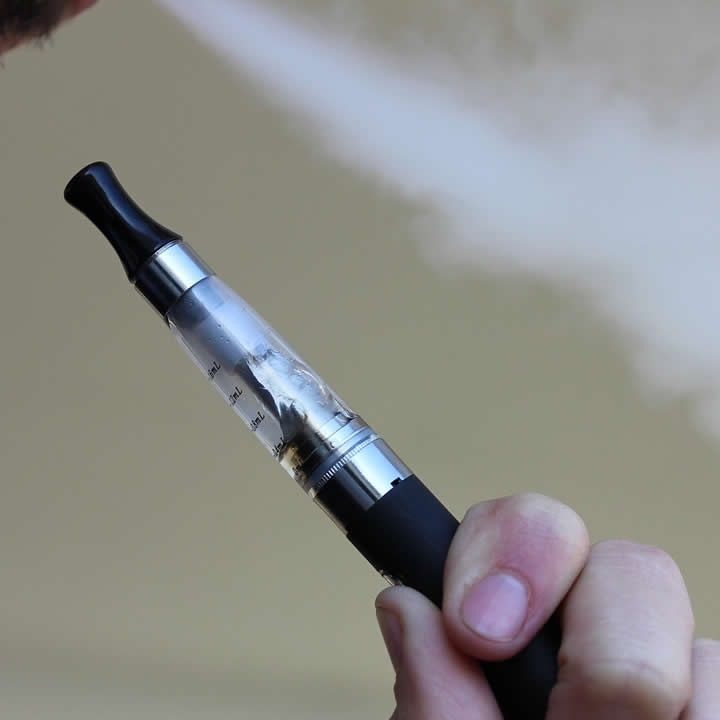Vaping is the act of aerosol inhalation and exhalation, often referred to as vapor generated by an e-cigarette or comparable machine. The word is used because e-cigarettes do not generate smoke from cigarettes, but rather an aerosol, often mistaken for air vapor, which is made up of fine particles.
With the increase of e-cigarettes brought to the mass market in the U.S. in 2007, Vaping has risen in popularity. E-cigarettes, similar to smoked cigarettes, and vapor pens, similar to big fountain pens, are typically easier in layout and less costly than user-customized appliances.
A vaping system generally comprises of a mouthpiece, a battery, an e-liquid or e-juice cartridge, and a battery-powered unit heating element. The battery heats the heating element when the instrument is used, which transforms the e-liquid contents into an aerosol that is taken into the lungs and then expelled.
Salt Nicotine:
Nicotine salts (aka nic salts) in tobacco leaves happen naturally. Vapers use nicely salted e-juice instead of standard freebase nicotine. This, so-called salt nic juice is harsher, for a smoother hit of vapor.
Due to the reduced intensity, it is simpler to inhale nic salt vapor and it’s chemical composition enables for faster absorption into the body (note: nic crystals are heavier than standard e-juices, therefore less is required to achieve the same outcome). Any of the vape juice below will surely deliver the same satisfying flavor and clouds that vapers seek.
Many vapers prefer nicotine salt and liquid due to its satisfactory nature. This manufactured nicotine may be less rough on the neck than the standard e-liquid nicotine. It is typically simpler to inhale a salt-based nicotine e-juice, and the amount of nicotine supplied per puff is greater. For those who are just starting to investigate vaping as an option to smoking, this can be very satisfactory.
What is Salt Nicotine?
Before the latest excitement began, most vapers (and smokers, for that matter) had never heard of nicotine salts. That doesn’t mean they haven’t been around for quite a long time, though. In reality, it can be argued that nicotine salts are the only natural nicotine out there, and it would certainly retain water.
You see, not only are we unfamiliar with nicotine salts (as customers), but we are also unfamiliar with nicotine itself. It may come as a shock to you, but tobacco leaves contain only salts of nicotine and no sheer nicotine of freebase.
There are two separate types of nicotine in cigarette leaves: deprotonated and monoprotonated. What this implies is that to generate a much more stable molecule, the nicotine bonds in the plant with certain proteins. The outcome is a nicotine salt when this connection occurs. Depending on the acid engaged in the whole method, there are distinct kinds of nicotine salts (citric, malic, lactic, etc.).
Difference between freebase nicotine and salt nicotine:
The tobacco companies created regular, or freebase nicotine back in the 1960s, and it’s unprotonated. In reality, to render cigarettes heavier and more addictive, it was Phillip Morris who led the studies in this region. By introducing ammonia to the blend, PM assured an enhanced power of their cigarette blends. If you’ve ever wondered where the nicotine in an e-liquid comes from, there’s your reply–indeed, the entire vaping sector is capitalizing on the findings produced by Big Tobacco centuries earlier.
Nicotine salts are not highly bioavailable, although they are robust and organically accessible. What this means is that they are not absorbed as readily by the human body and cannot match their addictive characteristics with freebase nicotine characteristics. Today, tobacco smoke is the nicotine that is discovered is 100% freebase, deprived of all its protons, and that dramatically improves its bioavailability. This form of nicotine is also more lipid-soluble, meaning it can readily cross the blood-brain barrier, causing a more effective dopamine release than nicotine salts would usually do.

